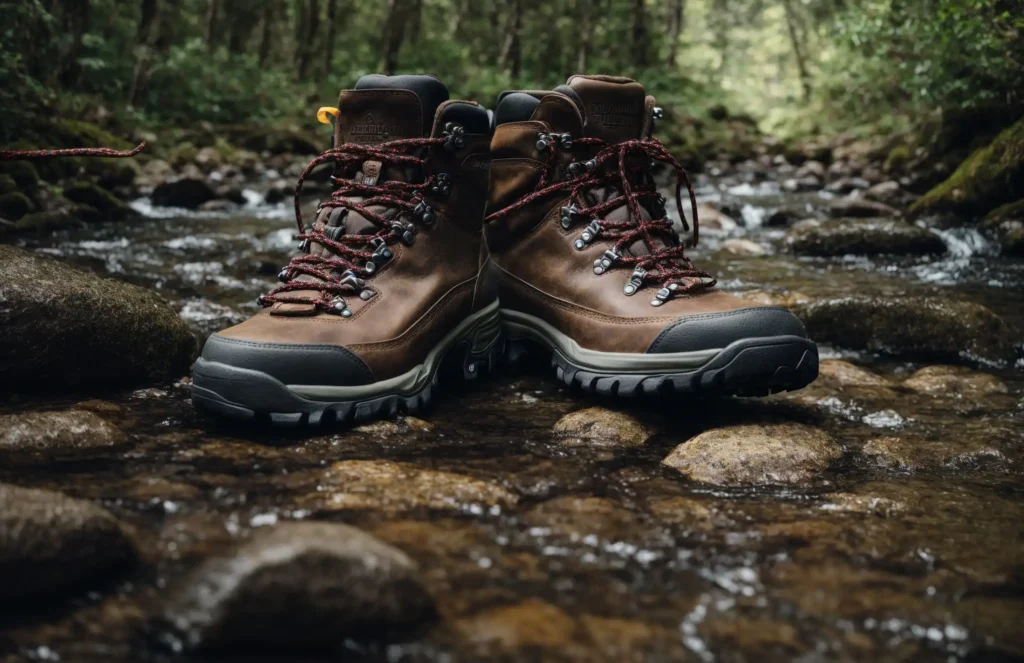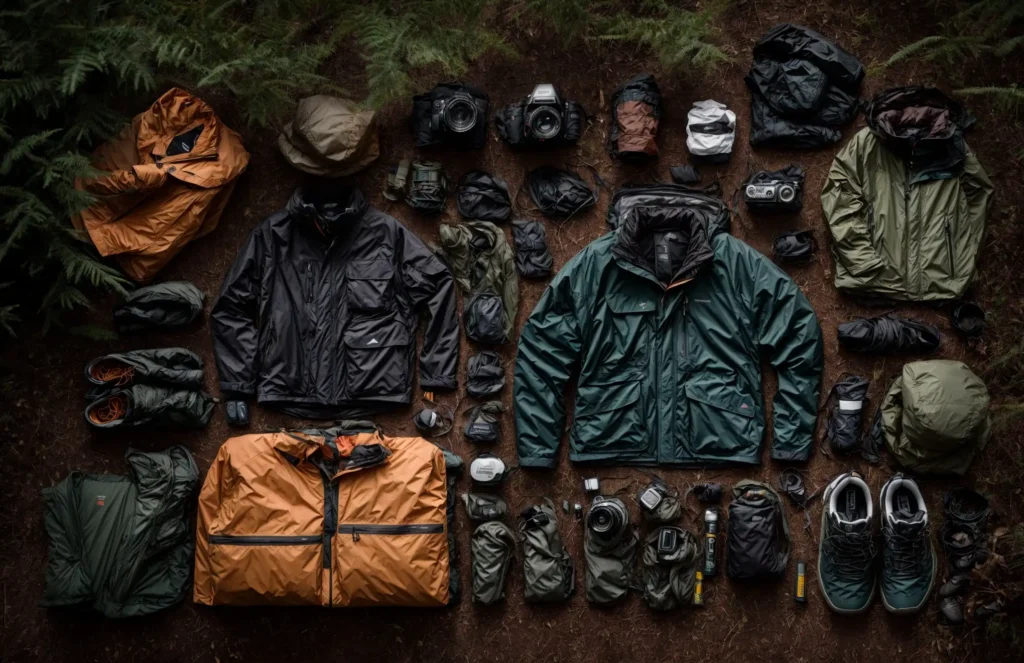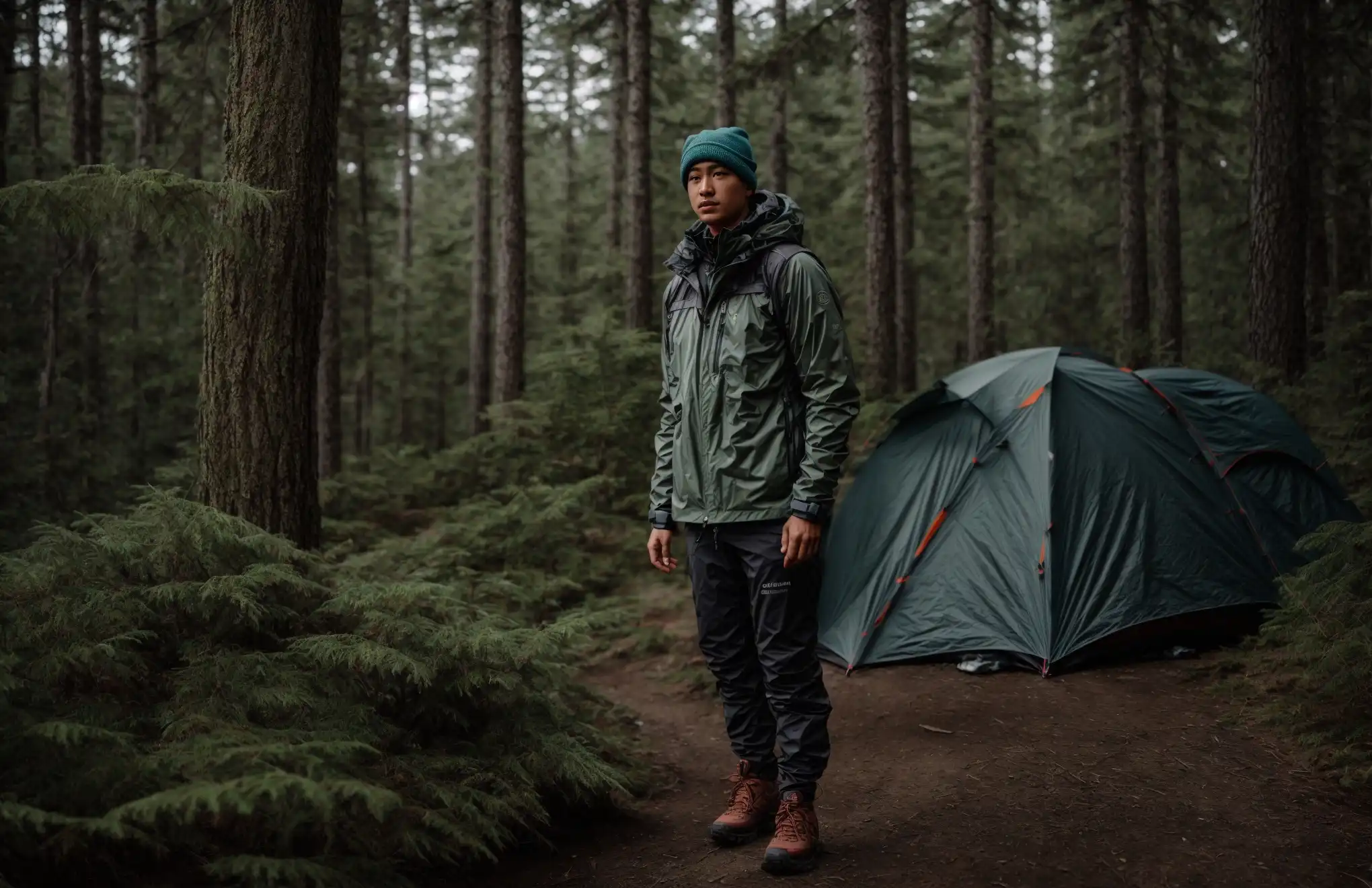Wear layered, moisture-wicking clothing and sturdy footwear when camping. Choose quick-dry fabrics and avoid cotton.
Embarking on a camping adventure requires outfitting yourself with the right attire to ensure comfort and safety. Essential to any camper’s wardrobe is layered clothing, which allows you to easily adjust to varying temperatures throughout your trip. Starting with a moisture-wicking base layer helps to keep your skin dry by pulling sweat away, a critical feature during hiking or physical activities.
Your middle layer should provide insulation and warmth, while the outer layer acts as a shield against wind and rain. Opt for quick-drying materials and steer clear of cotton, as it holds moisture and can lead to chills. Durable, supportive footwear is a must to tackle rough terrain. Remember, the right clothing choices can make the difference between a pleasant camping experience and an uncomfortable one.
About Camping Attire
Embarking on a camping journey, appropriate attire is more than just a fashion statement—it’s a crucial component for comfort and safety. Whether you’re a seasoned camper or just starting, understanding what to wear can transform your outdoor experience. The clothes you pack should offer protection against the elements, grant you mobility, and maintain your body at a comfortable temperature. Prepare to dive into the essentials of camping fashion, and get ready to embrace nature in style and comfort!
Understanding the Basics of Camping Fashion
When selecting your camping wardrobe, prioritize items that are practical and functional. The right attire can mean the difference between an enjoyable excursion and an uncomfortable one. Let’s outline the foundational pieces:
- Layering: Employ a versatile three-layer system—base, mid, and outer layers to regulate body temperature and manage moisture.
- Durability: Opt for sturdy fabrics that can withstand the rigors of the outdoors.
- Protection: Choose clothes that shield against the sun’s UV rays, rain, and insects.
- Comfort: Ensure your attire offers enough room for movement and doesn’t restrict activity.
The Role of Weather in Choosing Your Camping Wardrobe
The weather plays a pivotal role in determining your camping attire. Preparing for diverse conditions ensures you stay comfortable, dry, and safe.
| Weather Condition | Recommended Attire |
|---|---|
| Sunny and Warm | Lightweight, breathable fabrics with long sleeves for UV protection |
| Rainy | Waterproof but breathable outer layers; quick-dry materials |
| Cold | Insulated jackets, thermal base layers, warm hats, and gloves |
| Variable Conditions | Convertible clothing, such as zip-off pants and layering options |
Your clothing choices must suit various types of weather, which can change rapidly in certain camping environments. By preparing for different scenarios, you can fully enjoy your adventure, regardless of the climate. Remember, safety and comfort lead the way in camping fashion, so select your gear wisely!
Essential Clothing Items For Camping
Packing the right clothing for a camping trip makes the difference between a comfortable adventure and a potential struggle with the elements. Whether you’re planning to explore lush forests or climb rugged terrains, knowing what to wear camping is essential. This guide will help you select the perfect clothing items to ensure you are prepared for all weather scenarios and outdoor activities during your camping excursion.
The Must-have Layers: Base, Middle, and Outer
The key to staying comfortable while camping is mastering the art of layering. Here’s how to break it down:
- Base Layer: This is your moisture-wicking layer, usually made from materials like merino wool or synthetic fibers. It keeps sweat away from your skin to keep you dry.
- Middle Layer: The insulator of the trio, the middle layer retains body heat to keep you warm. Popular options include down jackets or fleece.
- Outer Layer: The shield against external elements. Select a waterproof and breathable jacket to protect against rain and wind while allowing moisture to escape.
Footwear Essentials: From Hiking Boots to Water Shoes
Varying terrain calls for different types of footwear:
| Type | Description | Usage |
|---|---|---|
| Hiking Boots | Durable, with good ankle support | Rocky or uneven trails |
| Trail Shoes | Lightweight and flexible | Short hikes on well-trodden paths |
| Water Shoes | Quick-dry and protective soles | Activities near rivers or lakes |

Affiliate Disclaimer: Outdoor Awaits is supported by its readers. We may earn an affiliate commission if you use our links to purchase a product(s) at no additional cost to you. To know more about us and learn how we tested the outdoor gear on our FAQ page.
Accessories: Hats, Gloves, and Scarves
Don’t overlook these essential accessories when packing:
- Hats: A broad-brimmed hat for sun protection or a warm beanie for chilly nights.
- Gloves: Insulated gloves keep your hands warm during cold weather, while lighter gloves work for milder conditions.
- Scarves: A versatile piece, a scarf can protect you from the sun, sand, and provide additional warmth.
These items not only add extra protection from the elements but also offer the opportunity to include a splash of personal style to your camping attire.
Choosing the Right Materials For Camping Clothes
Embarking on a camping adventure requires not just a brave heart but also the right attire. Choosing the Right Materials for Camping Clothes can be the difference between a trip filled with discomfort and one rich with enjoyment. In dynamic outdoor conditions, your clothing must rise to the occasion and meet a variety of needs from moisture management to insulation, all while being durable enough to withstand the harsh elements of the wild.

Advantages of Moisture-wicking Fabrics
Comfort in the great outdoors starts with staying dry. Moisture-wicking fabrics actively transport sweat away from the skin to the outer layer of the clothing where it can evaporate swiftly. This technology ensures that even as you trek or climb, your body remains dry, helping to regulate your temperature and prevent chafing. Adopting apparel crafted from materials like polyester and specialized blends gives you a significant edge by:
- Enhancing comfort by keeping your skin dry and fresh.
- Reducing the risk of overheating in warm conditions.
- Minimizing body odor through fast evaporation of sweat.
The Importance of Insulation Materials
As temperatures dip during evenings or at higher altitudes, the right insulation becomes crucial. Insulation materials work by trapping warm air close to your body, forming a barrier against the cold. Fabrics like fleece and wool are top choices for campers due to their outstanding thermal retention. Key benefits include:
- Consistent warmth, crucial for comfort during chilly nights.
- Lightweight and breathable, making them ideal for layering.
- Quick-drying properties, which are essential after exposure to rain or snow.
Durability and Protection: The Role of Synthetic and Natural Fibers
Finally, resilience is key when faced with rugged terrain and unpredictable weather. Synthetic and natural fibers each play a role in fortifying your wardrobe. Synthetics like nylon and polyester are prized for their exceptional strength and abrasion resistance, while natural fibers such as cotton and merino wool offer softness and breathability. The ideal camping attire often involves a blend that brings together the best of both worlds by:
- Resisting tears and abrasions, critical in forested or rocky environments.
- Shielding from UV rays and insects, providing added outdoor protection.
- Being sustainable and environmentally friendly, especially organic and natural choices.
Selecting the suitable materials for your camping wardrobe will elevate your outdoor experience, allowing you to face everything from a misty morning hike to a windy mountaintop with confidence and ease. Whether you’re a seasoned camper or a beginner, remember: the fabric of your outdoor attire is not just a matter of choice, but strategy.
Learn: What is a Pit Toilet Camping
Specialized Apparel For Various Camping Activities
Embarking on a camping trip involves not only the spirit of adventure but also the necessary gear to tackle the varied outdoor activities that come with it. Specialized apparel plays a crucial role in ensuring you enjoy each aspect of your journey, be it hiking the rugged trails, waiting patiently by the lake with your fishing rod, or setting up camp near a babbling brook. The key is to prepare with the appropriate attire that will keep you comfortable, protected, and efficient. Let’s explore what to wear to complement the specific activities that make camping a truly memorable experience.
Apparel For Hiking: Combining Comfort and Functionality
The chosen apparel for hiking should offer a balance between comfort and functionality. The right clothing can significantly enhance your hiking experience. Consider these essentials:
- Moisture-wicking shirts to keep sweat away from your body.
- Durable but flexible pants or shorts that allow for a full range of motion.
- Layered options, including a breathable jacket for fluctuating temperatures.
- Supportive hiking boots with good traction.
Also, don’t overlook the importance of accessories such as gloves and a hat to shield you from the elements.
Fishing and Hunting Clothes: Blending in With the Environment
For those who love the stillness of fishing or the thrill of hunting, blending in with your surroundings is paramount. The ideal fishing and hunting clothes consider outdoor conditions:
| Clothing Item | Features |
|---|---|
| Camouflage attire | For effective concealment |
| Vests with multiple pockets | Easy access to gear and supplies |
| Water-resistant boots | Keeping feet dry |
| Wide-brimmed hats | Protecting from sun exposure |
Remember to prioritize silent fabrics that won’t give your position away to wildlife.
Waterproof Gear: Staying Dry When Camping Near Water Bodies
Camping next to water bodies brings its own set of challenges—primarily staying dry. Waterproof gear is a necessity to keep the fun going regardless of the weather:
- Waterproof jackets and pants serve as the first line of defense against rain.
- Consider gaiters for extra protection for your legs.
- Waterproof footwear is essential not only for comfort but also for safety.
Packing water-resistant bags and covers for your gear ensures all your belongings stay dry—even during an unexpected downpour.
Packing Tips and Maintenance Of Camping Wardrobe
Preparing for a camping trip is an adventure in itself, especially when it comes to choosing the right attire. A well-packed camping wardrobe can make a significant difference in your outdoor experience. Not only do you need to select clothing that will protect you from the elements, but you also need to pack efficiently and care for your gear post-trip. Below you’ll find effective packing strategies, tips for maintaining your camping clothes, and advice for adhering to eco-friendly practices.
Maximizing Space and Minimizing Weight: Effective Packing Strategies
The art of packing for camping involves the delicate balance between preparedness and minimalism. Activating ‘packing mode’ requires strategy, and with these tips, you’ll be able to trek with ease and comfort.
- Choose multi-functional clothing that can be mixed and matched, suitable for various weather conditions and activities.
- Utilize compression bags to squeeze air out of bulky items like sleeping bags and down jackets, significantly reducing the space they occupy.
- Roll, instead of fold, your clothing to avoid wrinkles and create uniform sizes for more efficient space usage.
- Limit your footwear to a versatile pair of waterproof hiking boots and a comfortable pair of camp shoes.
Caring For Your Camping Clothes Post-trip
Once you return from your excursion, proper care of your camping garments is crucial for their longevity and performance. Follow these steps to ensure your clothes are ready for your next adventure.
- Empty all pockets and shake out any debris before washing.
- Use a gentle, fragrance-free detergent to preserve the technical fabrics.
- Hang-dry your clothes to avoid heat damage from dryers.
- Replenish any water-repellent finishes when necessary, using a suitable waterproofing treatment.
Eco-friendly Practices: Sustaining Nature While Enjoying It
Practicing eco-friendly habits ensures the preservation of the environment you’ve come to enjoy. Embrace these sustainable methods to reduce your footprint and give back to nature.
- Opt for clothing made from organic or recycled materials.
- Avoid single-use plastic bags by packing with reusable containers.
- Choose biodegradable soaps and detergents for washing your clothes and gear.
- Participate in ‘Leave No Trace’ ethics, ensuring you leave the campsite cleaner than you found it.
Conclusion
As your camping trip draws near, remember that comfort meets function is key. Choose apparel that protects against the weather while offering ease and mobility. Balance is vital; never overpack. Embrace nature’s call with suitable attire, and let your outdoor adventures unfold with confidence.
Pack smart, dress right, and enjoy every moment. Elevate your camping game with our expert advice in the Learning section of Outdoor Awaits.
Sukhen is a passionate blogger and traveler who visited many historical places in Bangladesh, Myanmar, India, and Thailand. He's an avid camper, so he shares his knowledge of camping and wildlife with his readers. He also helps readers plan their own camping trips. To know more, stay connected with Outdoor Awaits.

